March 2, 1997 - Ingrid
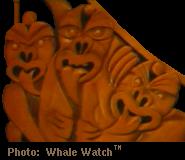 Whale Watch Kaikoura has provided a great tourist attraction for
the town of Kaikoura. The company was begun in the mid-80's by some local
people who realized that the year-round presence of sperm whales was indeed
rare and they began to observe and study their behavior.
Because of the
interest of the Maori people in preserving the natural habitats of New
Zealand, the whale watch company was turned over to the local tribe to
maintain.
Whale Watch Kaikoura has provided a great tourist attraction for
the town of Kaikoura. The company was begun in the mid-80's by some local
people who realized that the year-round presence of sperm whales was indeed
rare and they began to observe and study their behavior.
Because of the
interest of the Maori people in preserving the natural habitats of New
Zealand, the whale watch company was turned over to the local tribe to
maintain.
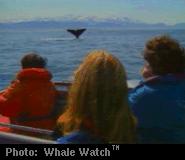 The director, Wally Stone, supports the research done by the Giant
Squid Expedition, for the information gleaned from these scientists will
provide further insight into the lives of the whales under the surface.
All they know about the whales now is what they have observed at the
surface, when the whales re-oxygenate after their 45 minute dives. The
time spent at the surface is a fraction of the time spent under the water,
and very little is known of their underwater time. They hope to learn what
the sperm whales actually eat, how deep they dive, and whether there is
social interaction at the depths. Finding the giant squid is a bonus.
The director, Wally Stone, supports the research done by the Giant
Squid Expedition, for the information gleaned from these scientists will
provide further insight into the lives of the whales under the surface.
All they know about the whales now is what they have observed at the
surface, when the whales re-oxygenate after their 45 minute dives. The
time spent at the surface is a fraction of the time spent under the water,
and very little is known of their underwater time. They hope to learn what
the sperm whales actually eat, how deep they dive, and whether there is
social interaction at the depths. Finding the giant squid is a bonus.
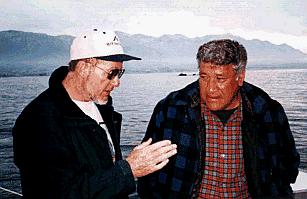 Staff members of the company signed up to accompany our team of
scientists on the Tanekaha during the two weeks we operated the Odyssey.
They observed our procedures and advised us on the best locations to send
our yellow submersible. Three times we had Whale Watch observers aboard.
Our most faithful supporter from Whale Watch was Spencer Kahu, who is also
one of the tribal elders. Spencer not only spent a full day on board, but
he also attended three of the five slide shows Clyde gave in the community
during the 6 weeks he was in Kaikoura.
Staff members of the company signed up to accompany our team of
scientists on the Tanekaha during the two weeks we operated the Odyssey.
They observed our procedures and advised us on the best locations to send
our yellow submersible. Three times we had Whale Watch observers aboard.
Our most faithful supporter from Whale Watch was Spencer Kahu, who is also
one of the tribal elders. Spencer not only spent a full day on board, but
he also attended three of the five slide shows Clyde gave in the community
during the 6 weeks he was in Kaikoura.
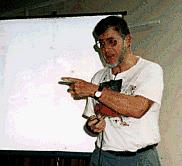 In addition to the Lions Club, Clyde spoke at the auditorium at the
visitors' center which was filled with interested citizens who were curious about this team of scientists visiting
their town.
In addition to the Lions Club, Clyde spoke at the auditorium at the
visitors' center which was filled with interested citizens who were curious about this team of scientists visiting
their town.
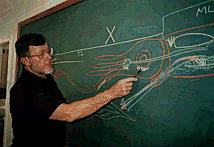 One talk was reserved for a class of future science teachers who
happened to be at the marine lab for a week of study.
One talk was reserved for a class of future science teachers who
happened to be at the marine lab for a week of study.
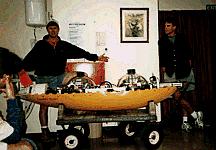 All the team scientists participated in that particular talk where they
demonstrated the equipment and techniques used during this entire
expedition.
All the team scientists participated in that particular talk where they
demonstrated the equipment and techniques used during this entire
expedition.
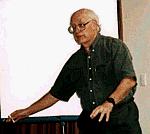 Education at home and abroad is one of the primary
objectives of this expedition; there was a lot of education of the
public during the time we spent in Kaikoura.
Education at home and abroad is one of the primary
objectives of this expedition; there was a lot of education of the
public during the time we spent in Kaikoura.
![]()
Smithsonian Giant Squid Overview Page
gene carl feldman / gene@seawifs.gsfc.nasa.gov